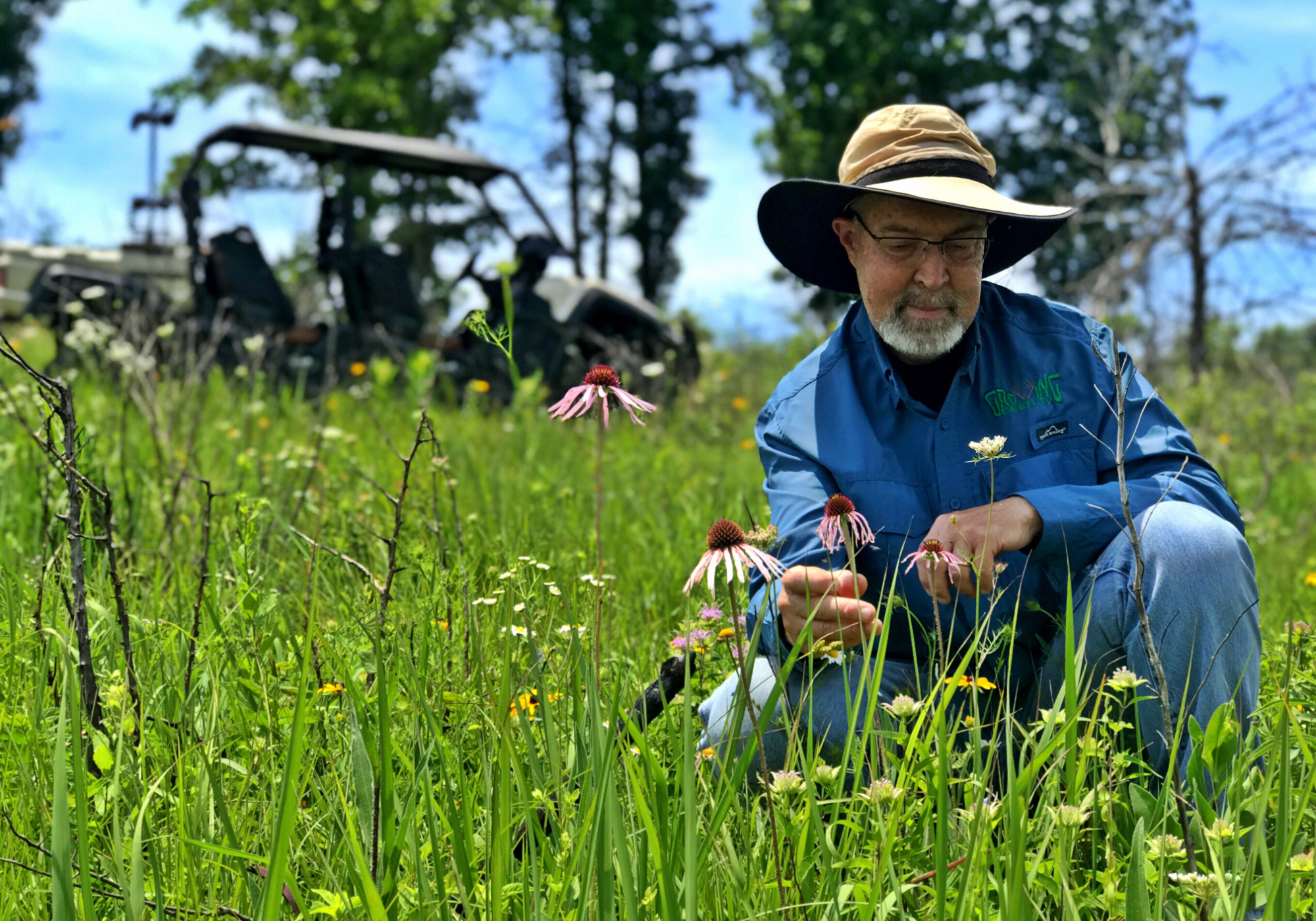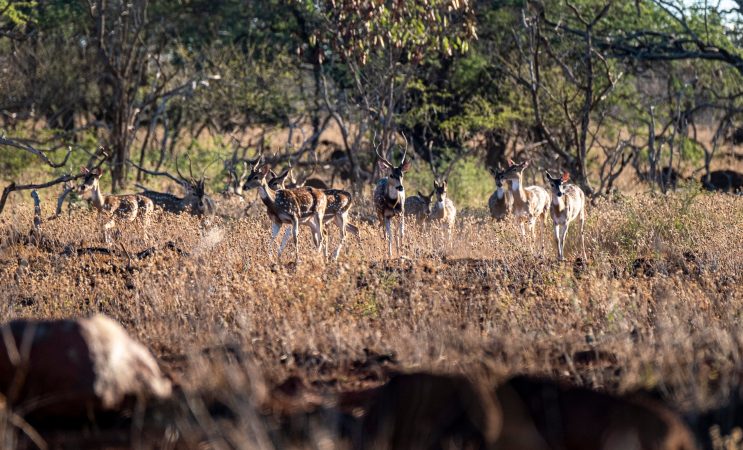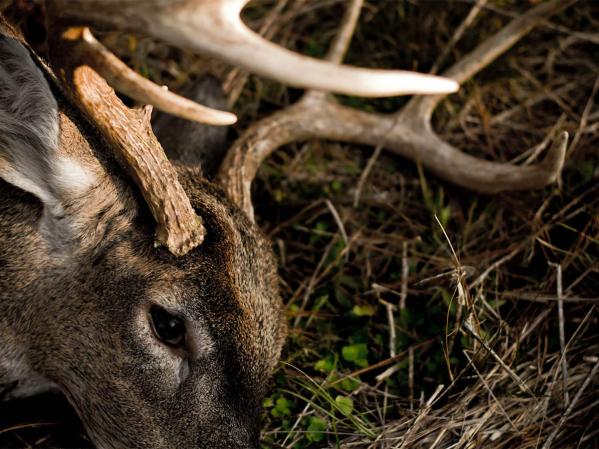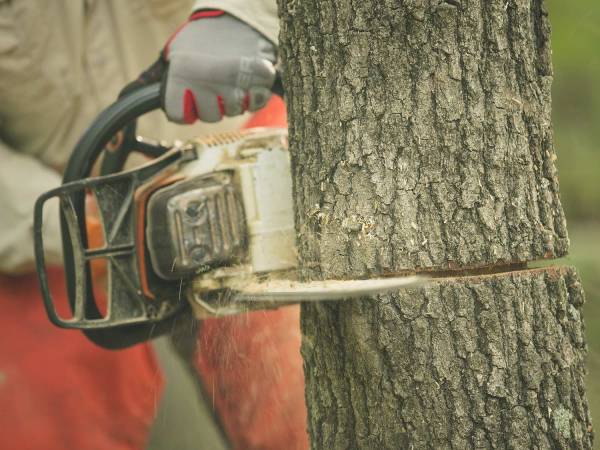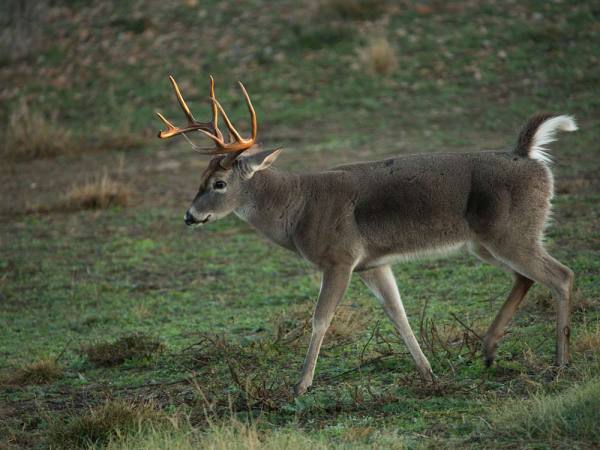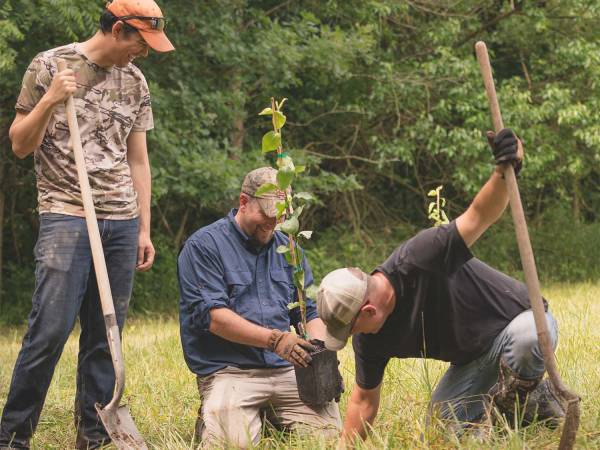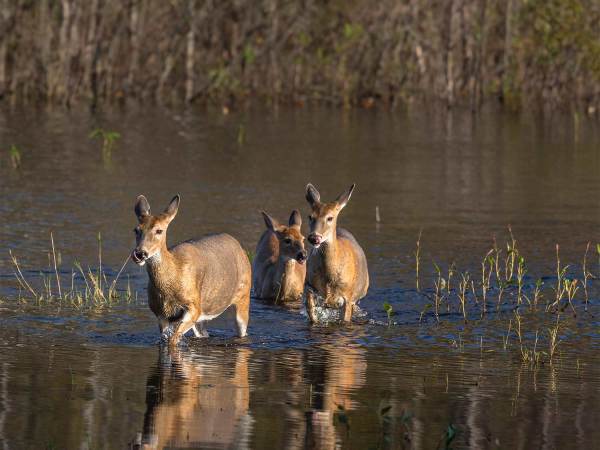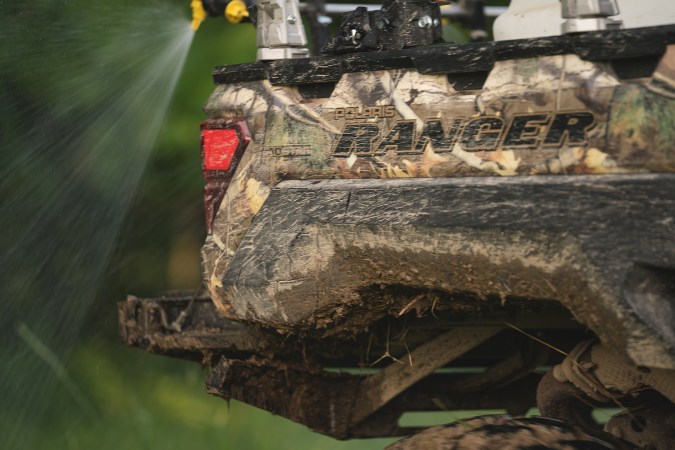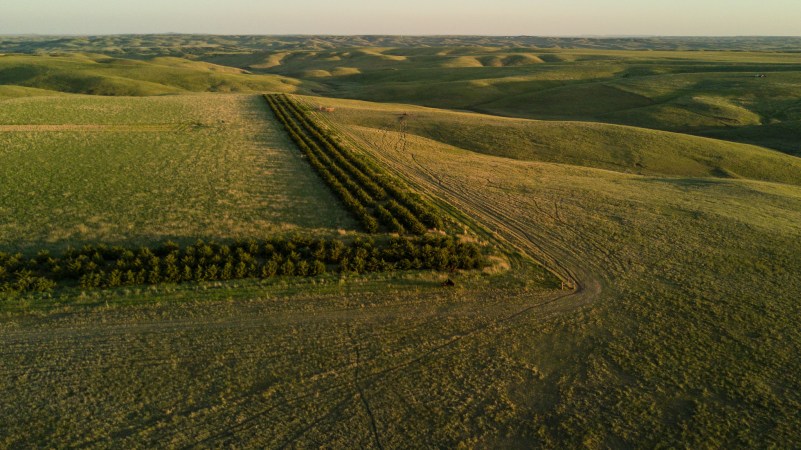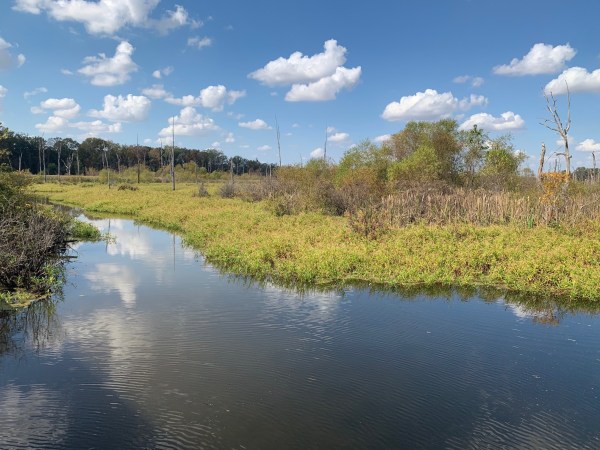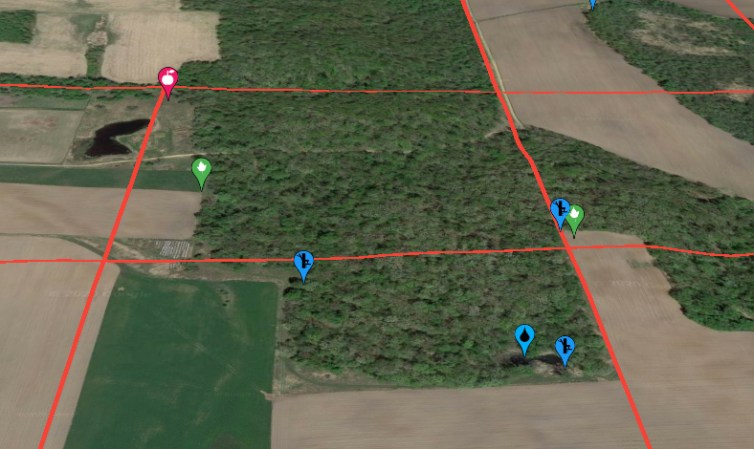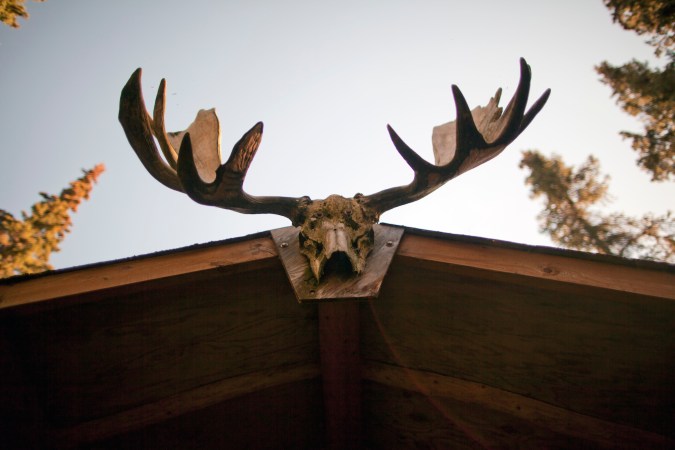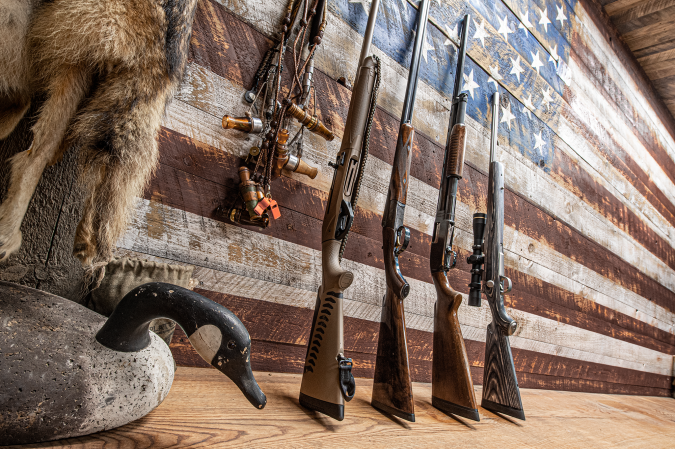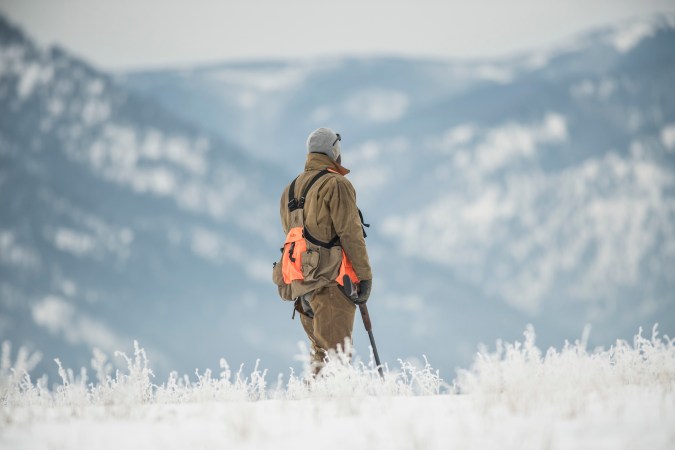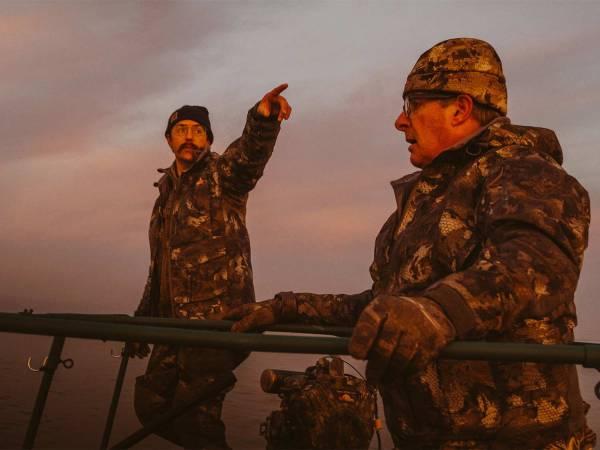Like any normal adults, Grant and Tracy Woods were craving ice cream one day while visiting family at Grant’s childhood home in the Missouri Ozarks. So they did the only thing one can do in such a predicament: they went out for a scoop.
Grant munched on his cone and meandered across the road from the ice cream stand to look at some condominiums that had taken over a plot of land where he used to hunt deer as a kid—a classic moment of sentimentality for any lifelong hunter revisiting their youth. Tracy flipped through a real estate guide while Grant reminisced. She thumbed to a page that shouted about a piece of land for sale. Not long after the ice cream date, they went to look at the property in person. They saw a jungle of invasives, a lot of dead cattle, and acre upon acre of potential.
That was 21 years ago. Today, the plot is sprawling and lush, saturated with native species of forbs and grasses interspersed with thick patches of wildlife cover. Grant and Tracy expanded the boundaries of their ownership over the years and, after countless hours of sweat-soaked work, ended up with a 1,500-acre plot of heaven on earth for deer, turkeys, and other critters. Lemons to lemonade, water to wine, eggs to mayonnaise—every metaphor for making something delightful out of something mundane applies to the Proving Grounds.
Over the summer, the land on which Grant raised his family, taught America how to grow a food plot, and built his whitetail hunting and habitat management brand GrowingDeer broke into two pieces. Grant sold the 1,500 most improved acres to a friend and retained the other 900 acres that have yet to be manipulated by the expertise of the GrowingDeer team. Grant is now preparing to turn that land into the Proving Grounds 2.0.
Outdoor Life sat down with Grant to figure out what he’s taking with him from the last two decades of extreme habitat improvement, what’s in store for the future, and how he’d advise other landowners and hunters to manage their own acreage. This interview has been edited for brevity and clarity.
Outdoor Life: Let’s start with your history with this piece of land.
Grant Woods: My wife Tracy and I were living in South Carolina. We’re both farm kids and wanted land and we just couldn’t find anything we could afford to fit our criteria. I travel a lot for my work so we wanted to be within an hour and a half of a regional airport, and we thought we’d have a family someday so we wanted to be in a good public school system. But we couldn’t find anything we could afford in the South. I’m from this area, the Ozark Mountains in southwestern Missouri, and we were back visiting family. Tracy and I went out for ice cream, and I went across the little highway to see all the condos that had been built where I used to deer hunt, and Tracy picked up a real estate guide and found this property. And I thought gosh, looking at land is a lot more exciting than going shopping, so we called a real estate agent and went and looked at it.
It was really rough. To be honest, I’ve never seen so many cattle skeletons on a property in my three-decade career. The guy who had owned it had died and someone else had just poached cattle on here, and they ate themselves out of house and home and then they starved. That’s how poor the habitat was. This gentleman had left the land to a hospital and they weren’t that interested in selling. We made an offer that they turned down. But then I guess the hospital’s donations dried up and they asked us if our offer was still good.
So that’s how God put us here. I just had paper topo maps, and I’d walk a ridge top or 50 yards down, and I’d mark notes on the map wherever I walked. I walked that whole property in the first year, and I literally saw one deer. But I had faith. I didn’t hunt or let my family hunt for the first five years. So as we improved the habitat and allowed what few deer were here to respond to those improvements, we started seeing more deer. I remember the first day I saw a decent buck, it was a little 10-point 2-year-old, and I still wasn’t hunting but I was so excited.
OL: So how long did you own the land and how did you decide it was time to sell?
GW: Tracy and I owned it for a little over 20 years, and over time, as budget allowed, when neighboring properties would come for sale, we would try to buy them. We ended up with about 2,500 acres. But I just don’t have the time or budget to take care of all that land the way I like it. I had the front 1,500 acres really nice. I don’t want this to sound boastful, but it’s a really nice wildlife property. So Tracy and I decided to let someone else enjoy it, because the back 900 acres is rough. It’s full of invasive exotic plants, weeds, almost no food plots, no road system, and I really enjoy improving a property for wildlife and watching the plant species composition change, and the quality of habitat change, and the wildlife populations right along with that. So we made our minds up to let someone else enjoy this 1,500 acres. We’re just taking the resources from this property, the sweat equity and time we’ve put in, and pouring it into the southern portion to improve it now.
OL: Just a standard transaction, right? Just taking return from one investment and putting it into another?
GW: It’s really more like an emotional transaction. This property isn’t perfect, but a lot of projects have been completed. And the southern portion is a blank canvas for me to paint on. Instead of sitting on my back deck and looking over my improved property, I want to go improve a different piece of property.
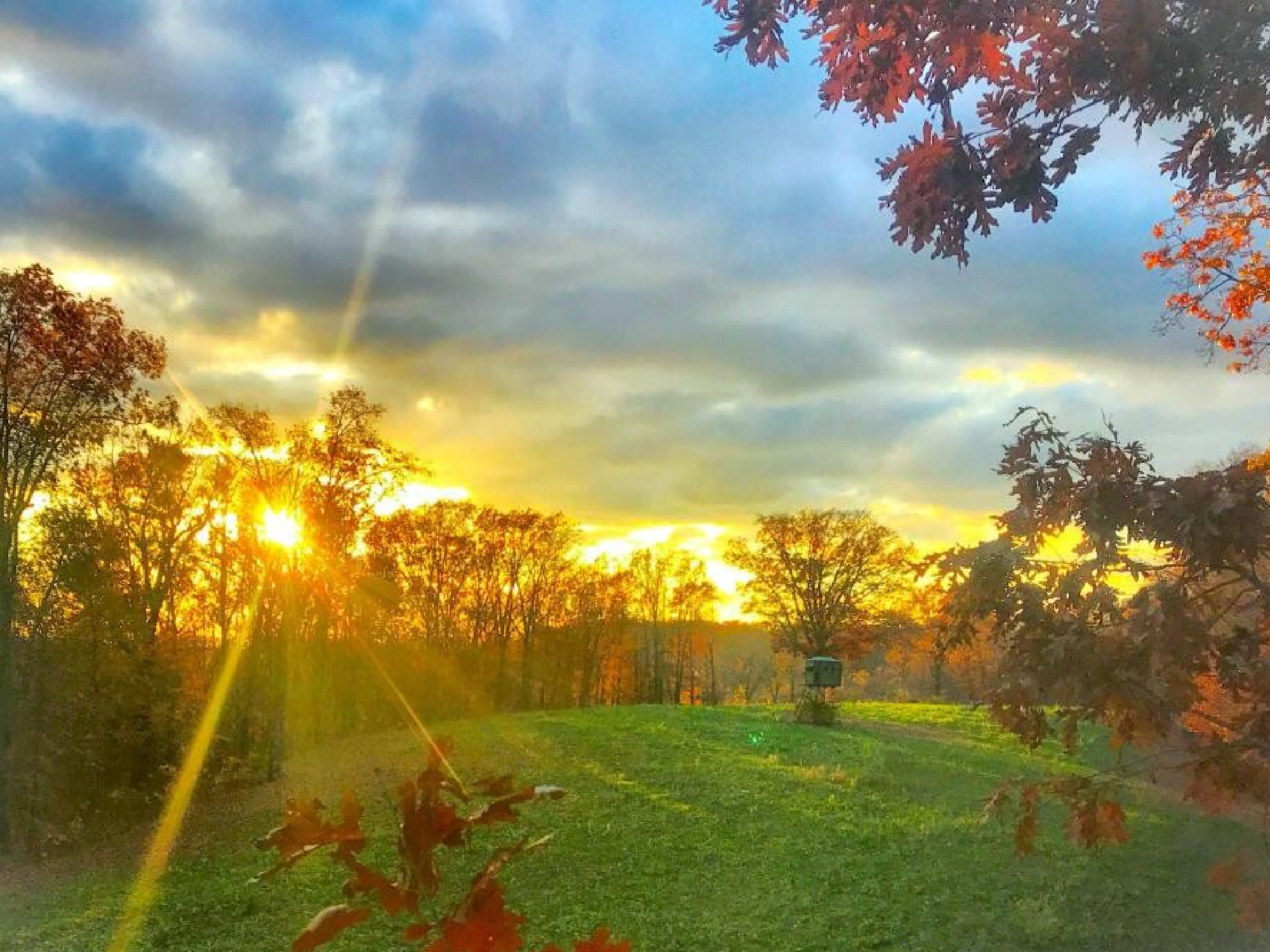
OL: Could you lay out some of the details of the transaction?
GW: I have a buddy named Joe who has a really nice podcast on habitat and hunting in Alabama, and he works for National Land Realty. So I called Joe and told him Tracy and I were thinking about selling the land, and he told us they happen to use this program called Land Tour 360. Everyone’s using drones these days, and they put up drones all over the property to get the 360-degree view, and of course we’ve been filming here for 12 years so we had all kinds of footage, so in the listing you could zoom down and see some deer eating in a food plot or where we used some prescribed fire. I’d never seen a listing like that, so I tip my hat to them for going the extra mile and really showing the property, not just saying it has a history of big bucks. Within the first week or two, the listing had a hit, and that ended up being the guy who purchased the land. To turn it around so quickly and professionally…I was almost caught off guard.
OL: You didn’t think it’d be that easy to get rid of?
GW: I just didn’t really know what to expect. They just made it easy and handled it in such a professional way that it started a great neighborly relationship with the person who bought the land. There was no drama or controversy.
OL: Talk about some of the management techniques you’ve used and what you’ve learned from this piece of land.
GW: So as I mentioned, this had been an old cattle ranch, full of species that I’m sure came out of hay fed through the cattle. We identified three species that were really prominent—sericea lespedeza, multiflora rose, and knapweed. They were taking up hundreds of acres and were outcompeting native species of vegetation. Unfortunately, you have to use a herbicide to control them, but we didn’t just broadcast or use a helicopter, we were out there with the backpack sprayer or a paintbrush depending on the location, and tried to be really surgical about taking those out.
Then we really aggressively used prescribed fire to stimulate that native seed bank. One huge blessing of the Ozarks, since they’re so rocky and steep with shallow soil that hasn’t been plowed much, is that the native seed bank is still right on top of the soil. And when we removed the invasive exotics and used fire to stimulate that seed bank, we got hundreds and hundreds of acres of beautiful wildflowers, forbs, and native grasses. We did not pay for those seeds. They were in the soil and had probably been dormant for 75 years or more. So now we just have lots of acreage of native plants and forbs, supplemented by food plots that provide quality forage and cover. Once we started doing that, our wildlife populations grew in quality and quantity by leaps and bounds.
OL: It’s amazing what fire can do. It’s like hitting the reset button, right?
GW: Yeah, and we still use it. Most people who use prescribed fire only do dormant-season burns, before spring green-up. And that works, but grasses hold their seed much later into the winter than forbs do, and forbs are the real deer food. Deer do not eat grasses at all. You may see a deer out in a grass pasture, but it’s eating ragweed or clover. Whitetails don’t have the gut bacteria to digest grasses. So if you only burn in that dormant season, late winter, you’re going to predominantly see grasses respond.
Every state had a few trappers or explorers who were literate enough to write, and I go to the library and check out their journals. There was a man here named Schoolcraft, who was looking for lead outcroppings at the time. He’s very literate and a pretty good botanist and he took notes. He’d make a journal entry every morning and I’d note the days he talked about smelling smoke. And this wasn’t campfire smoke, this was big smoke, fill-the-sky smoke. It was either a wildfire or where Native Americans set a fire to improve habitat. They used fire to improve habitat all the time. They realized that young fresh growth attracted more critters than old, stagnant growth. He talked so much about burning during July, August, September, after fawns and poults poults are up running and flying around. So we’ve tried to restore native vegetation by using growing-season fire, and I think that has been a huge benefit to our habitat. We usually do a dormant-season burn first since there’s a lot of fuel and it’s easier to control a fire during dormant season. But after we’ve reduced that fuel level, our next burn is a growing season burn.
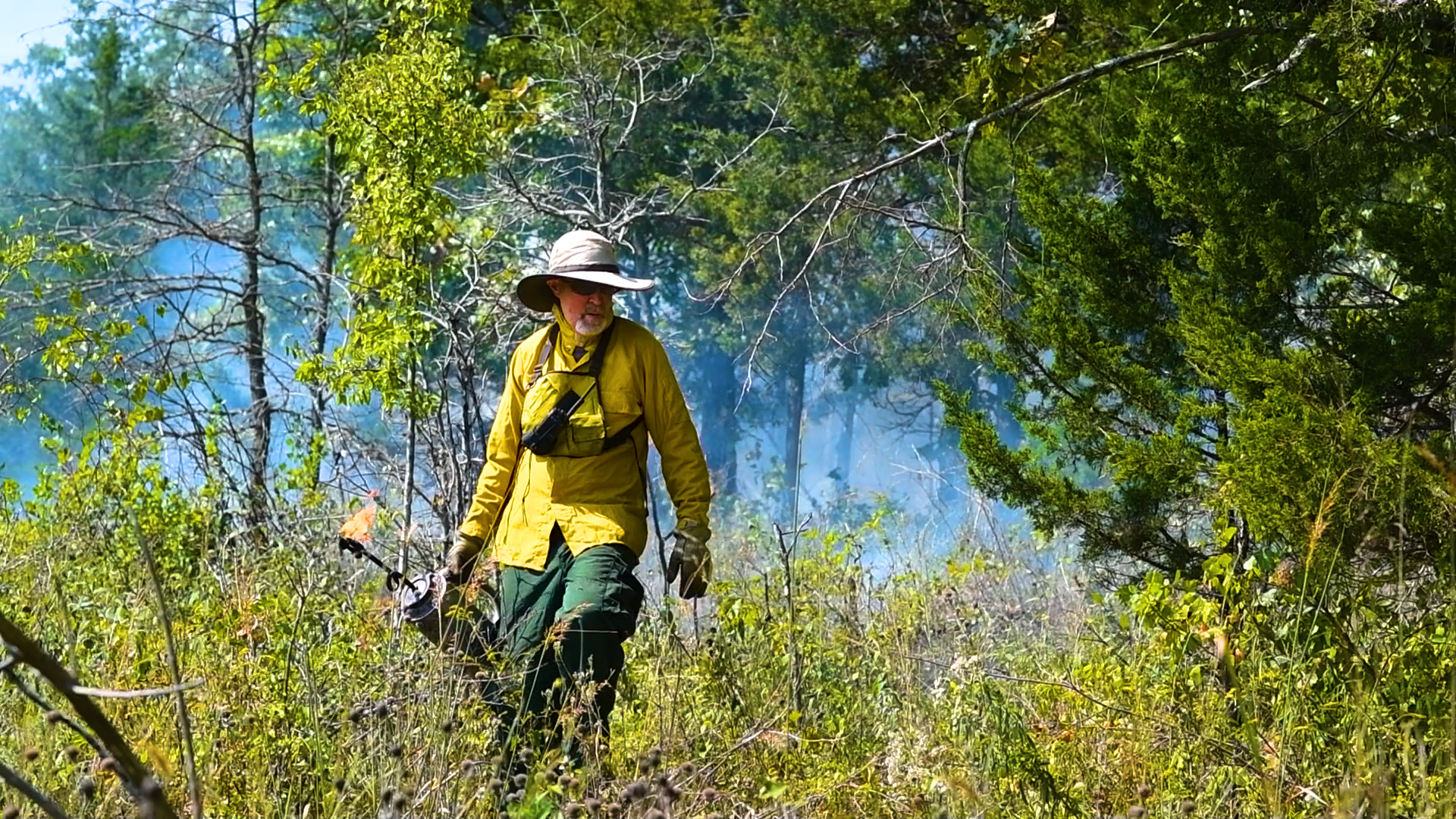
OL: What have been some of the biggest challenges to creating the Proving Grounds?
GW: Well, budget’s always a challenge, and time is another huge one. I have to go make a living. I’m a wildlife biologist and I still work for landowners throughout the whitetail’s range, so I travel a lot. I love helping other people restore their habitat, I’m really passionate about that. But I need a budget to work on my own habitat, and I don’t want to be selfish and only do it here, because we can make these great examples throughout North America.
Another challenge has been that there’s not a lot of training for this work. I went through all levels of school, but most of the current training is about this or that herbicide, mass-production timber, not restoring native habitat. And I understand that, because most people get a job with a timber company or a state agency, but I think it’s sort of sad because we’re trying to reinvent the wheel and do it in a really complicated way when simple tools will oftentimes meet that objective faster and for less money and with less toxins on the landscape. Now, I’m not anti-herbicide, I look at using herbicide like getting a root canal. If I really need one to save my other teeth or get me out of pain, I’ll do it. But I don’t just wake up one day and say “Hey, I’ll go get a root canal,” and I never wake up and say “I’m just going to go kill something with herbicide today.” If I can’t control it with fire, I’ll use that tool.
OL: So looking forward, will you carry a lot of this knowledge that you’ve accrued over the last 20 years into, well, can we call it the Proving Grounds 2.0?
GW: Yes, that’s our working name, that’s how we separate the two. And yes, I wish earlier in my career I would’ve known the value of growing season burns, so I certainly will implement more of those. I also wish I’d known how to build roads with zero chance of erosion. I’ve really refined my road-building technique, a technique Clemson University actually created, called “broad-based dips.” We’ve won a couple awards, including Missouri Department of Conservation Master Conservationist Award, for restoring native vegetation and not having any erosion and minimal herbicide use.
I don’t worry as much about the deer herds anymore. I know that if I want big bucks to mature until they’re 4, 5, 6 years old, in Canada or Florida or anywhere I work, I just need to build super high-quality habitat for that geographic region. The native plant culture just can’t be beat. It handles drought and winter better and local wildlife populations are genetically adapted to it. I plant food plots and enjoy playing with the latest and greatest seed, but now I look at them as supplemental feed, not my primary food source. They’re also a great way to attract game out for viewing for hunters and nonhunters alike. But the bulk of my feed is coming from native vegetation. It’s less expensive and prettier to look at. A green field is beautiful, but when you’ve got yellow, blue, and purple wildflowers out there nine months of the year, that’s tough to beat. But I think I’ve learned that too many people solely rely on food plots and ignore the rest of the property. So my message is to not ignore the bulk of the property you’re hunting and use it as a tool if you have permission. If you’re on public land or a lease obviously you can’t do that, but if you have an opportunity, don’t ignore improving that native habitat.
OL: Do you have any tangible goals for the Proving Grounds 2.0?
GW: So I’m 61, and my goal is to get it to the same habitat quality as the Proving Grounds in about a quarter of the time. Will I do better than the Proving Grounds? I don’t think so. But how fast can I get it there? And that doesn’t necessarily mean using a better budget, that just means not reinventing the wheel, not making mistakes, working with the land instead of against it. I used to have to figure out what pests I was going to kill each day. But you know how if you look out over a native grass field on a fall morning when the sun gets above the horizon, it seems like you can see a million spiderwebs out there? I see that as beneficial now. Spiders are predatory and they’re controlling any pests that might be eating my food plots. So we use zero fungicide, insecticide, or seed coatings. I want fungus growing in all my food plots because fungus transfers nutrients from the soil to the seed. I’ve had a total mindset change by learning how valuable the natural communities are, so I want to see a billion spiderwebs out there. That’s turkey and quail food, and they’re eating up armyworms before they ever get to my food plot. So I think my main goal is to work with nature instead of against it.
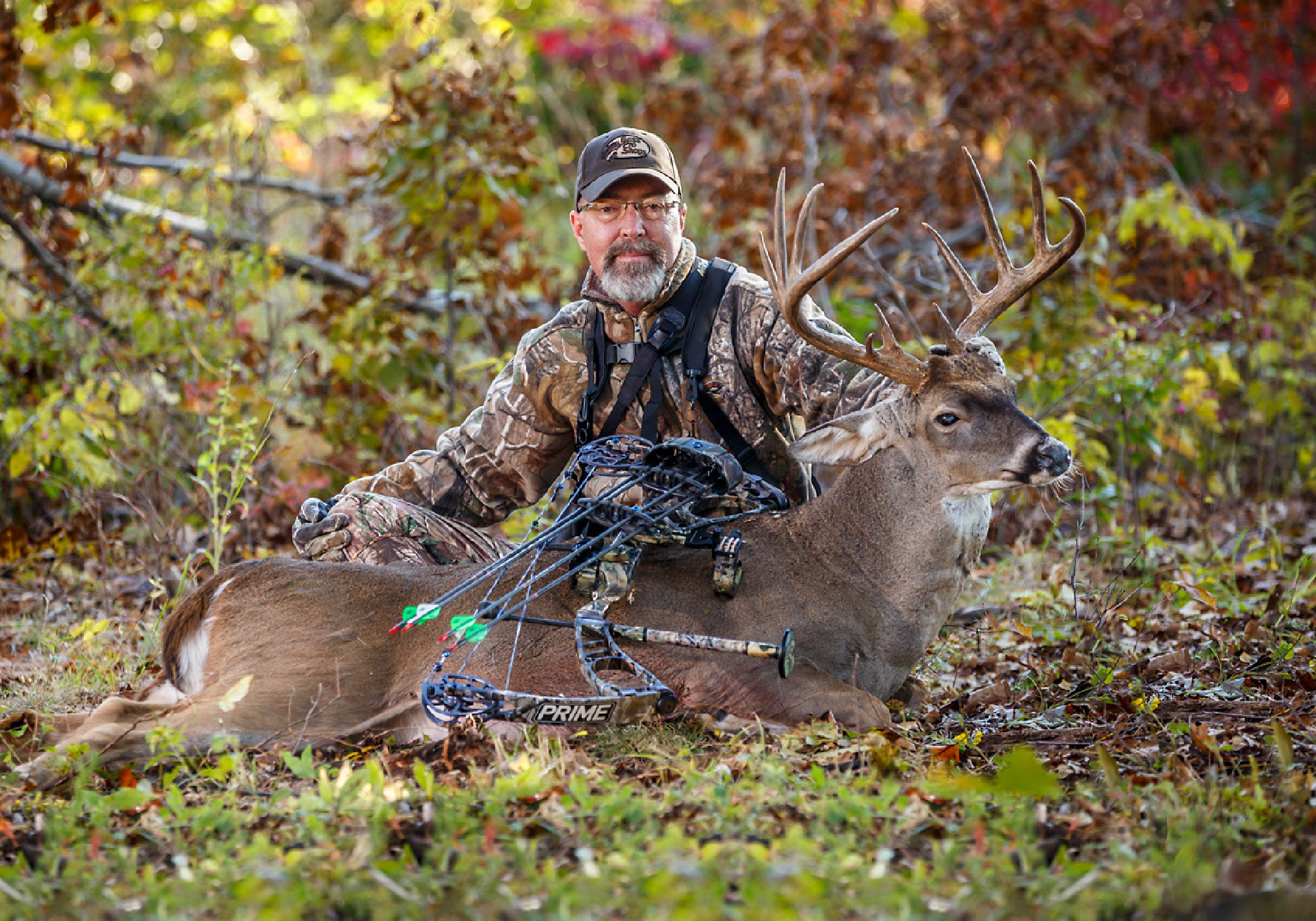
OL: What advice would you give to the small-scale landowner who is trying to improve habitat?
GW: We work with a lot of those landowners, and we coach them to look at both their own property and the rest of the neighborhood, since you’re sharing deer with neighbors. Deer need food, water, and cover every day. So look at the resources that are available right next to you. If you’re right next to a big bean field, you don’t need to worry about water or summer food. But maybe once that field is harvested, if you plant a little fall or winter food plot, you can attract a lot of deer. So we look at resources in the neighborhood and attempt to help landowners provide the one on their land that’s the most limited during hunting season. We won’t necessarily hold deer year-round, but we can absolutely attract deer during hunting season if we provide the limited resources in that area.
OL: So figuring out what you can provide that isn’t already available nearby?
GW: Yeah, it’s just like us humans, right? If I don’t have any ice cream in the house, and I drive by an ice cream store, that’s the limited resource and I’m more likely to pull in there. I think we get hung up on being jealous of what our neighbors have on their property, but what they have may just be one of a dozen resources you can provide on your property. So focusing on the limited resource is a great technique no matter the property size. Here in the Ozarks, I’m surrounded by fescue pasture and high-graded hardwood timber. So quality food, be it native vegetation of a good food plot, was a huge attraction here, and continues to be. So that will certainly be my focus going forward.
OL: Well, I’d just like to point out that we’ve come full circle on the ice cream front.
GW: *Chuckles* Yeah, well, you can tell where my true heart is.

